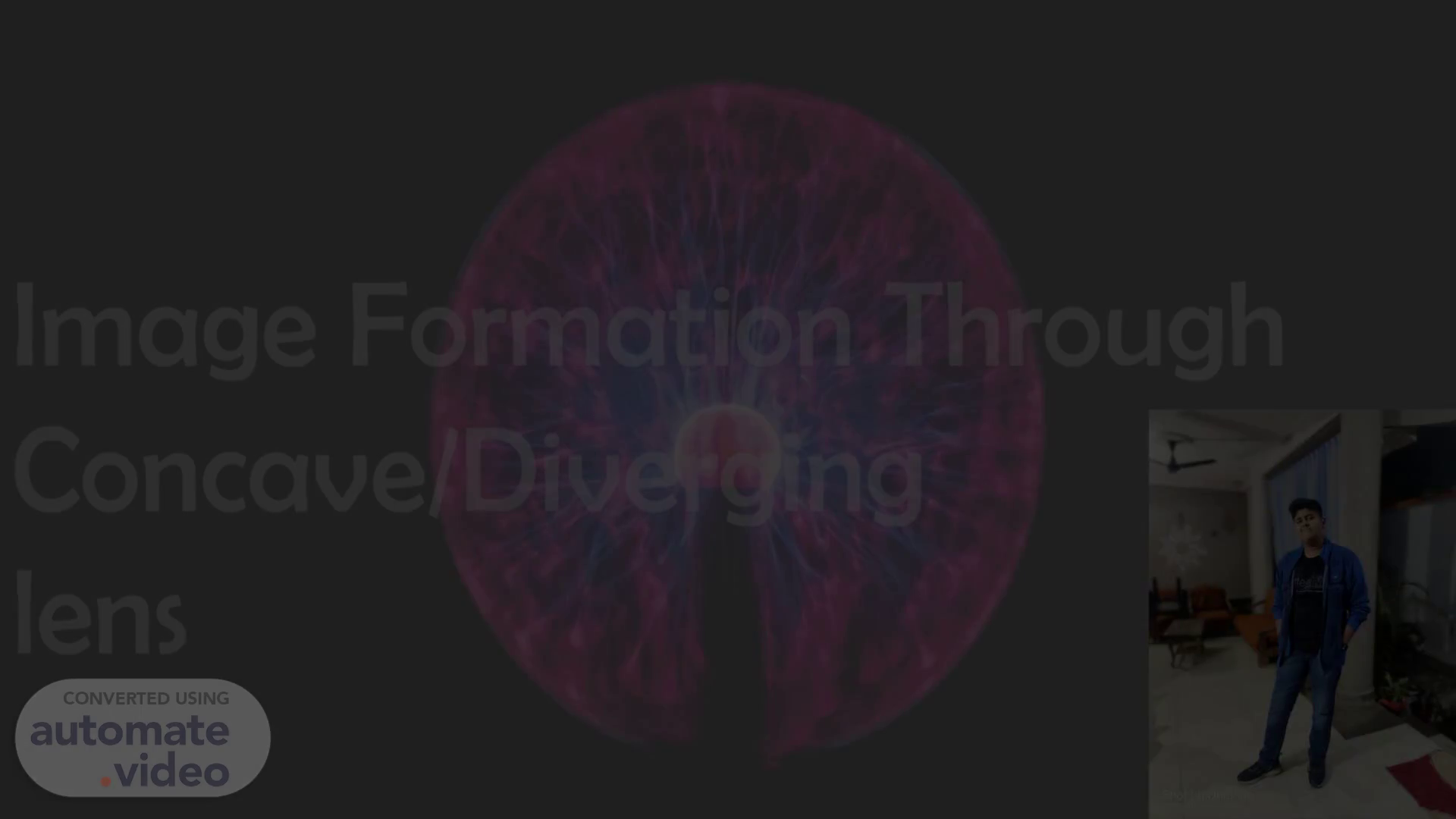
PowerPoint Presentation
Scene 1 (0s)
Image Formation Through Concave/Diverging lens.
Scene 2 (20s)
[Audio] Concave lenses are characterized by being thicker in the middle than at the edges, causing light passing through the lens to be spread out and focused at a point. We will explore how this phenomenon is used to form images, as well as the practical applications of concave lenses..
Scene 3 (38s)
[Audio] A concave lens has the ability to diverge parallel rays of light, resulting in the creation of a virtual and upright image that is bigger than the real object. Through altering the curvature of the lens and the position of the object, the size as well as shape of the image can be adjusted. This is a fundamental tool for a wide variety of optical uses..
Scene 4 (1m 0s)
[Audio] Considering placement of the object relative to the lens, there are two main cases when discussing image formation through concave/diverging lenses. If the object is placed at infinity, the light from all parts of the object will be diverged by the lens and form an inverted image of the object on the opposite side of the lens. If the object is placed in front of the lens, the light rays passing from one side of the object will be diverged more than those from the other side, resulting in an inverted image from the lens..
Scene 5 (1m 31s)
[Audio] The phenomenon of image formation when light goes through a diverging lens will be discussed in this slide. Light rays from infinity will form an image at the focal point, F1, which is virtual, erect and point-sized. Through this phenomenon, magnified or reduced images can be created, thus making the lens a powerful tool..
Scene 6 (1m 54s)
This. Image formed between O and F. Image formed is Virtual Erect Diminished Between O and F.
Scene 7 (2m 5s)
[Audio] A concave lens is used in many different everyday applications, such as corrective glasses, cameras and telescopes. These lenses take advantage of the optical properties of a concave lens to produce an image. They also play an important role in science, technology and medicine, as they allow us to create images of objects that are too small to be seen with the naked eye. Thank you for your attention and participation in this presentation..